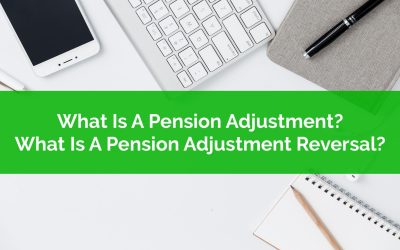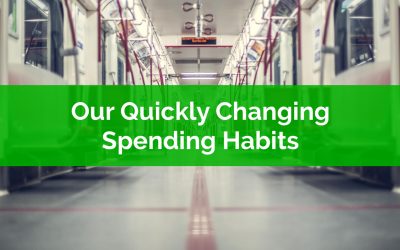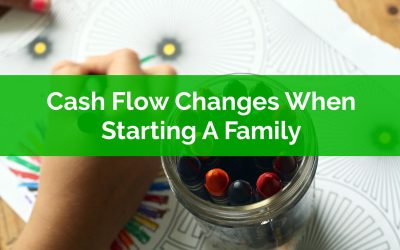Thank you for joining the waitlist!
You’re on the list for early access!
We will contact you via email when we’re ready for you to start your self-directed financial plan. In the mean time here is a quick preview…
Check out our latest blog posts…
What Is A Pension Adjustment? What Is A Pension Adjustment Reversal?
What is a pension adjustment? What is a pension adjusted reversal? If you’ve recently done your taxes or received your notice of assessment you may be wondering what these terms mean. You may have noticed large amounts of money being attributed to these items. You also may have noticed that they affect your available RRSP contribution room.
Anyone with a registered pension plan (RPP) or deferred profit sharing plan (DPSP) will notice that they’re receiving a pension adjustment.
The purpose of the pension adjustment is simple, it’s meant to equalize registered assets between those with employer sponsored pensions and those without. It reduces RRSP contribution room for those who receive (or will receive) benefits from a pension plan or deferred profit sharing plan.
The maximum anyone can put into their RRSP is 18% of previous years earned income up to the annual max. The pension adjustment reduces this new RRSP contribution room, sometimes to nearly nothing, in an attempt to make things more fair. The idea is that the maximum that can be put into registered savings (either pension, DPSP or RRSP) should be fair for everyone.
To do this effectively we need the pension adjustment (PA) and when people leave a pension or deferred profit sharing plan we need a pension adjustment reversal (PAR) (more on that later).
Our Quickly Changing Spending Habits
It may not always be that obvious, but habits have a LARGE impact on our day-to-day spending. Very little of our monthly spending is actually driven by pure decision making. Although we would like to believe we’re in control of our spending, the truth is most of our day-to-day spending is driven by our spending habits. Even when we think we’re making a unique spending decision, “should I buy this new toaster or not?” it’s still likely influenced by our past spending decisions.
Spending is also very important, it has an ENORMOUS impact on a financial plan. Unlike other financial factors, whether than be investment returns or income, spending is the number one factor when it comes to financial planning.
Spending even an extra $10/day means a potential $192,389 LESS at retirement.
PLUS! Spending an extra $10/day IN retirement requires an extra $91,240 in financial assets at the start of retirement.
So not only does spending more mean you have less financial assets at retirement, it also means you need more assets to support that spending, a double impact!
Spending is important to every financial plan, and because spending is driven by habits, that also means habits are important.
And… unlike any time in recent history, our spending habits have been disrupted like never before.
Social distancing, self isolation, work from home, school closures, essential versus non-essential business etc. These changes have had an enormous impact on our spending habits in a very short period of time.
Despite the very negative reason for these changes there is a positive aspect, our spending habits have undergone a massive disruption. Unlike any time before, now it’s easier than ever to evaluate spending habits and decide what is truly important and what is simply nice to have.
Many of us will need to evaluate our spending habits out of necessity, but many of us can also take this time to evaluate our spending habits out of choice. We can all use this disruption to our normal spending habits as an opportunity to change our habits in a positive way for the long-term, putting us on a better financial path in the future.
Cash Flow Changes When Starting A Family
Starting a family is probably one of the most complex periods in a person’s financial life. There are changes to income, expenses, insurance, investments (RESPs) etc.
Anticipating and managing all these changes can be overwhelming. It’s good to have a framework to help understand what changes you can expect and how large they may be.
It’s also a good idea to prepare yourself financially for all these big changes. There are a few things you can do to prepare your finances for a decrease in income and an increase in expenses.
Generally you can separate the financial changes when starting a family into six different areas.
There are changes to…
– Income
– One-time expenses
– On-going expenses
– Insurance
– Investments
– Taxes and Gov. Benefits
In each of these areas there are different financial impacts that come with starting a family. Some of these impacts are positive and some are negative.
For example when it comes to Income, most new parents can expect to receive the Canada Child Benefit, one of the most generous benefits in Canada. This government benefit could add thousands to a new parents annual income (plus its non-taxable!) But at the same time a new parent may take 12-18 months off work which has a very negative impact on Income.
There are also many new expenses a new parent will face. There are one-time expenses, on-going expenses and then short lived but high cost expenses like daycare.
To help a new parent plan all these changes we need to look at each area separately to understand what changes we might expect.



